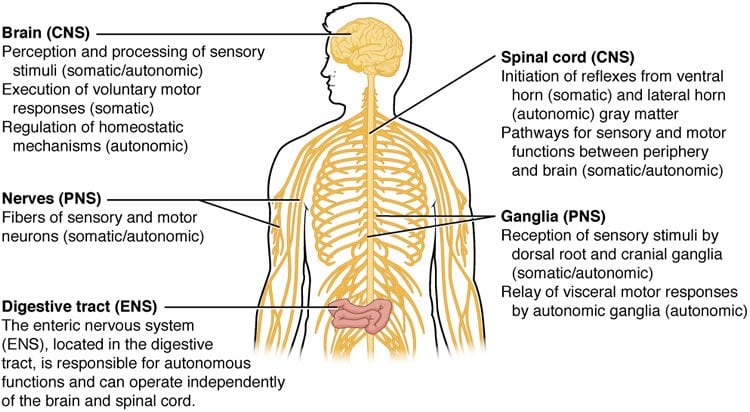New research might bring a frown to even the most heavily botoxed faces, with scientists finding how some of the potent toxin used for cosmetic surgery escapes into the central nervous system.
Researchers at The University of Queensland have shown how Botox – also known as Botulinum neurotoxin serotype A – is transported via our nerves back to the central nervous system.
Botox – best known for its ability to smooth wrinkles – has been extremely useful for the treatment of over-active muscles and spasticity as it promotes local and long-term paralysis.
UQ Queensland Brain Institute laboratory leader Professor Frederic Meunier said people had used the deadliest known neurotoxin, Botox, for decades to treat various conditions and for cosmetic purposes.
“The discovery that some of the injected toxin can travel through our nerves is worrying, considering the extreme potency of the toxin,” Professor Meunier said.
“However, to this day no unwanted effect attributed to such transport has been reported, suggesting that Botox is safe to use,” he said.

“While no side-effects of using Botox medically have been found yet, finding out how this highly active toxin travels to the central nervous system is vital because this pathway is also hijacked by other pathogens such as West Nile or Rabies viruses.
“A detailed understanding of this pathway is likely to lead to new treatments for some of these diseases.”
Dr Tong Wang, a Postdoctoral Research Fellow in Professor Meunier’s laboratory, discovered that most of the toxin is transported to a cellular dump where it is meant to be degraded upon reaching the central nervous system.
“For the first time, we’ve been able to visualise single molecules of Botulinum toxin travelling at high speed through our nerves,” Dr Wang said.
“We found that some of the active toxins manage to escape this route and intoxicate neighbouring cells, so we need to investigate this further and find out how.”
Botox is derived from naturally-occurring sources in the environment.
The study was a collaboration between scientists at the Queensland Brain Institute, UQ’s Australian Institute for Bioengineering and Nanotechnology, the UQ School of Chemical Engineering, the CSIRO and teams from the United States of America, France and the United Kingdom.
Funding: The discovery was made possible through cutting-edge microscopy equipment introduced to Queensland by Professor Meunier through a Queensland International Fellowship award and a Linkage Infrastructure, Equipment and Facilities grant from the Australian Research Council.
Source: Darius Koreis – University of Queensland
Image Credit: The image is credited to OpenStax College and is licensed Creative Commons Attribution 3.0 Unported
Video Source: The video is available via the University of Queensland Vimeo page
Original Research: Abstract for “Control of Autophagosome Axonal Retrograde Flux by Presynaptic Activity Unveiled Using Botulinum Neurotoxin Type A” by Tong Wang, Sally Martin, Andreas Papadopulos, Callista B. Harper, Timur A. Mavlyutov, Dhevahi Niranjan, Nick R. Glass, Justin J. Cooper-White, Jean-Baptiste Sibarita, Daniel Choquet, Bazbek Davletov, and Frédéric A. Meunier in Journal of Neuroscience. Published online April 15 2015 doi:10.1523/JNEUROSCI.3757-14.2015
Abstract
Control of Autophagosome Axonal Retrograde Flux by Presynaptic Activity Unveiled Using Botulinum Neurotoxin Type A
Botulinum neurotoxin type A (BoNT/A) is a highly potent neurotoxin that elicits flaccid paralysis by enzymatic cleavage of the exocytic machinery component SNAP25 in motor nerve terminals. However, recent evidence suggests that the neurotoxic activity of BoNT/A is not restricted to the periphery, but also reaches the CNS after retrograde axonal transport. Because BoNT/A is internalized in recycling synaptic vesicles, it is unclear which compartment facilitates this transport. Using live-cell confocal and single-molecule imaging of rat hippocampal neurons cultured in microfluidic devices, we show that the activity-dependent uptake of the binding domain of the BoNT/A heavy chain (BoNT/A-Hc) is followed by a delayed increase in retrograde axonal transport of BoNT/A-Hc carriers. Consistent with a role of presynaptic activity in initiating transport of the active toxin, activity-dependent uptake of BoNT/A in the terminal led to a significant increase in SNAP25 cleavage detected in the soma chamber compared with nonstimulated neurons. Surprisingly, most endocytosed BoNT/A-Hc was incorporated into LC3-positive autophagosomes generated in the nerve terminals, which then underwent retrograde transport to the cell soma, where they fused with lysosomes both in vitro and in vivo. Blocking autophagosome formation or acidification with wortmannin or bafilomycin A1, respectively, inhibited the activity-dependent retrograde trafficking of BoNT/A-Hc. Our data demonstrate that both the presynaptic formation of autophagosomes and the initiation of their retrograde trafficking are tightly regulated by presynaptic activity.
“Control of Autophagosome Axonal Retrograde Flux by Presynaptic Activity Unveiled Using Botulinum Neurotoxin Type A” by Tong Wang, Sally Martin, Andreas Papadopulos, Callista B. Harper, Timur A. Mavlyutov, Dhevahi Niranjan, Nick R. Glass, Justin J. Cooper-White, Jean-Baptiste Sibarita, Daniel Choquet, Bazbek Davletov, and Frédéric A. Meunier in Journal of Neuroscience. Published online April 15 2015 doi:10.1523/JNEUROSCI.3757-14.2015






